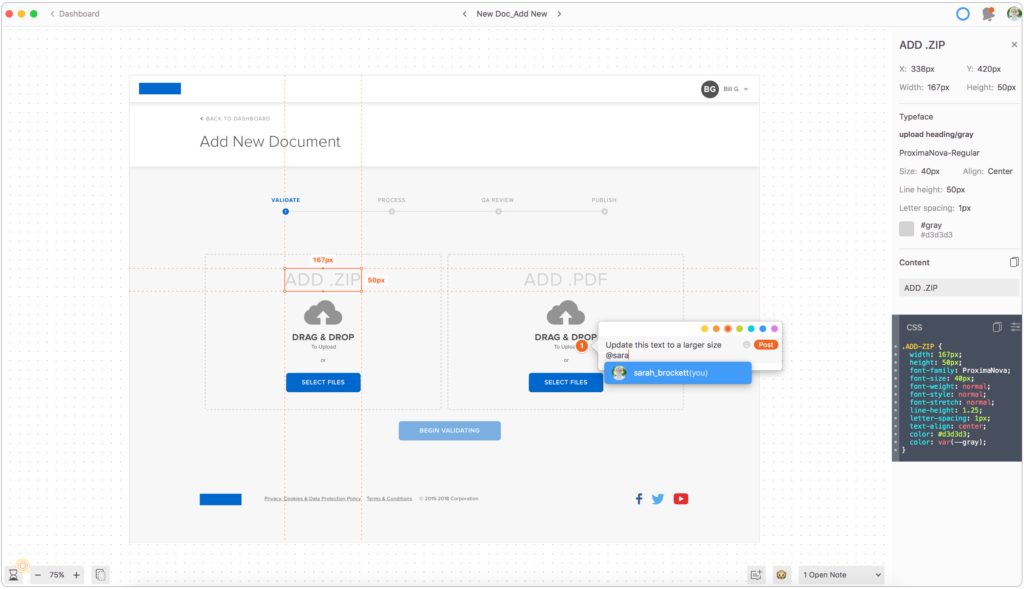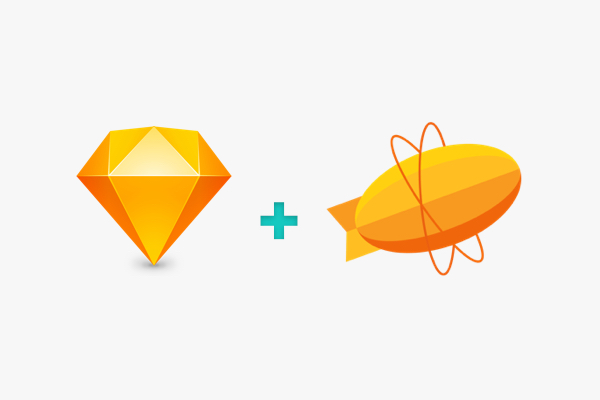There are countless design collaboration tools out there today. It can be overwhelming to know which ones are worth the time (and cost) investment, and which ones will turn into another item you need to maintain. I’ve recently started using Zeplin on a few of my projects, and I can confidently say it has improved my teams’ workflows.
Zeplin is a tool used to create smoother collaboration around design artifacts. You can quickly export your artboards to Zeplin via a Sketch plugin. It can also be used to host exported icons and imagery and to maintain a simple style library. It even has extensions to export code snippets in CSS, HTML, React Native, and other languages.

After using Zeplin on a few projects and gathering feedback from my teammates, I can confirm that this tool has improved our workflow. Here’s how:
It Saves Money
One of the biggest pros of using Zeplin is that it means you don’t need a Sketch license for every member of the team. This can save a good chunk of money, especially if your team is large. Although Zeplin is not free for large teams, it’s more cost effective than shelling out many Sketch licenses.
It Saves Time
The developers on my teams vocalized their excitement about how much time Zeplin saves them. Using Zeplin means they don’t have to track down the correct Sketch file. They don’t have to wait for Sketch to open. They don’t have to fumble through a tool they don’t know very well. Since I link the appropriate Zeplin artboards to the corresponding stories in our backlog, accessing the needed designs is super-quick and easy for everyone.
It Makes It Easy to Grab Specs
Zeplin makes determining the specifications of designs pretty darn simple. When you click on objects, it displays their measurements and the distance between them. It will also generate simple CSS, which can be handy for determining styling of, for example, a button.
It’s Stress-Free
Using Zeplin makes viewing design artifacts less anxiety-inducing. With Zeplin, no one has to worry about accidentally moving an object or having an improper font load and ruin the file—as can happen in Sketch when it automatically saves.
It’s Easy to Navigate
This might sound like a small victory, but it’s worth noting. Zeplin allows you to create folders of artboards, tag your artboards, and search via artboard name or tag. This method of cataloging your artboards makes locating the designs you’re looking for a breeze.
It’s a Good Collaboration Tool
One of the fantastic features of Zeplin is the ability to annotate your designs via its commenting feature. Our teams use this feature to track updates that need to be made to the designs. We also use it to ask clarifying questions about design requirements. Being able to color-code the comments means you can work out a system for this, as well. For example, I like to use red for items that I need to go back and update and blue for items that do not require my immediate action.
It Helps Maintain Consistent Styles
Aside from hosting your UI designs, Zeplin is also a great tool for creating a simple style guide. It will keep track of all colors and font styles used in the imported Sketch files. Reviewing this style guide has helped me keep my styles responsibly consistent and lean.
What About the Cons?
I’d say the only downside of using Zeplin is that, for the designer, it’s one more tool you need to maintain. It’s an additional step in your process to export and organize your artboards. However, doing so is quick, and the benefits I’ve mentioned here make it worth adding one more step to your process.

